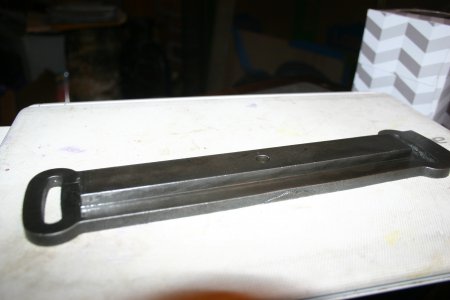- Joined
- Jan 9, 2020
- Messages
- 81
I have an Atlas Taper Attachment that produces improper tapers. I've traced the problem to This Part:

The center part of the piece measures 1.004" at one end; 0.999" in the center and 1.002" at the other end.
How would you fix the piece such that the center part is the same width along its entire length?
Gary

The center part of the piece measures 1.004" at one end; 0.999" in the center and 1.002" at the other end.
How would you fix the piece such that the center part is the same width along its entire length?
Gary
